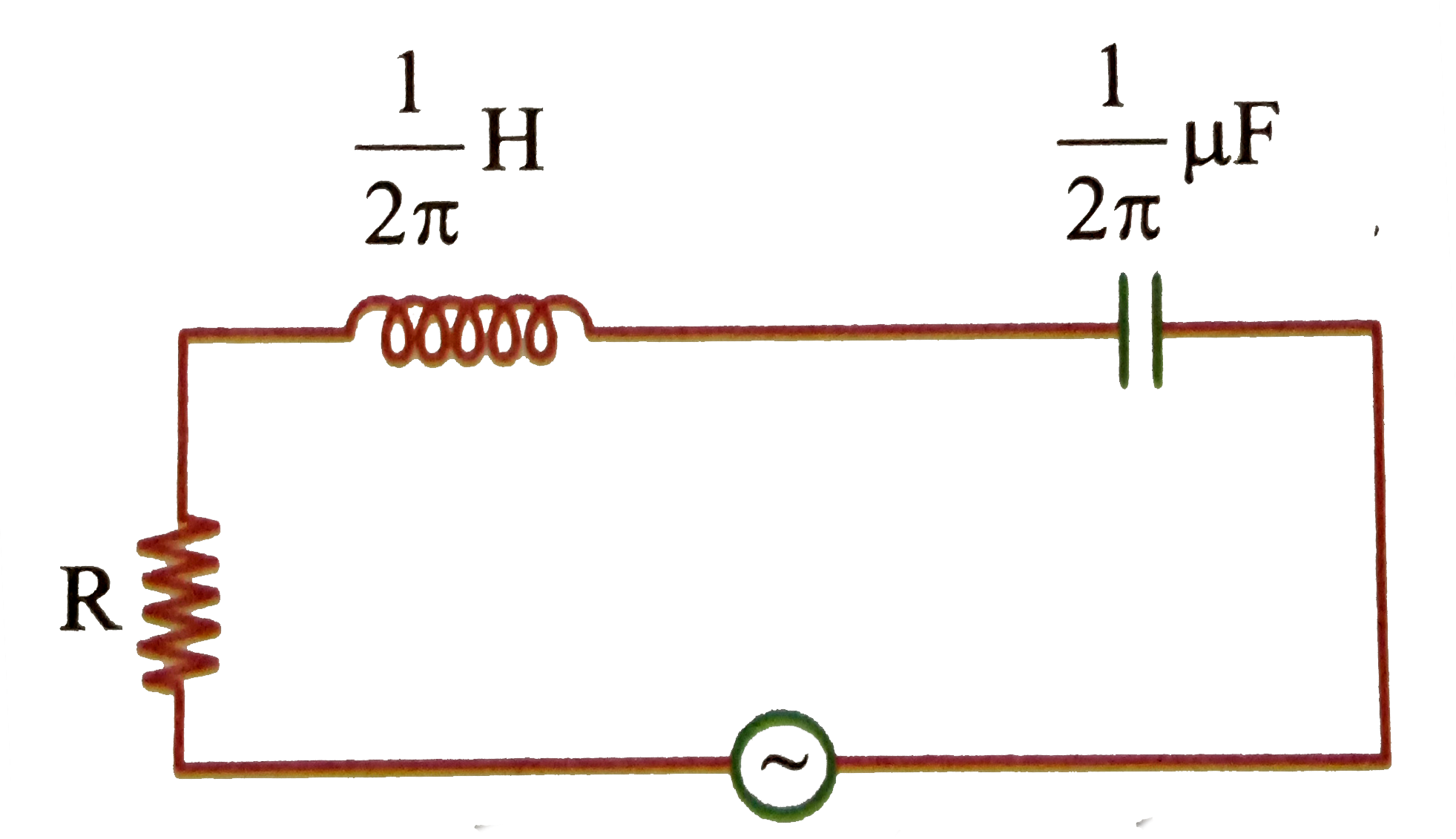The current in series LCR circuit will be the maximum when ω is
As large as possible
Equal o natural frequency of LCR system
√LC
√1/LC
The correct Answer is:D
To find the value of ω at which the current in a series LCR circuit is maximum, we can follow these steps:
Step 1: Understand the relationship between current, voltage, and impedance
In a series LCR circuit, the current (I) is given by the formula:
I=VZ
where V is the voltage and Z is the impedance of the circuit.
Step 2: Identify when the current is maximum
The current will be maximum when the impedance Z is minimum. Therefore, we need to find the condition under which the impedance is minimized.
Step 3: Impedance in a series LCR circuit
The impedance Z in a series LCR circuit is given by:
Z=R+j(XL−XC)
where:
- R is the resistance,
- XL=ωL is the inductive reactance,
- XC=1ωC is the capacitive reactance.
Step 4: Condition for resonance
At resonance, the inductive reactance equals the capacitive reactance:
XL=XC
This implies:
ωL=1ωC
Step 5: Solve for omega
Rearranging the equation gives:
ω2=1LC
Taking the square root of both sides, we find:
ω=1√LC
Step 6: Conclusion
Thus, the current in the series LCR circuit will be maximum when:
ω=1√LC
In a series LCR circuit, the current (I) is given by the formula:
I=VZ
where V is the voltage and Z is the impedance of the circuit.
The current will be maximum when the impedance Z is minimum. Therefore, we need to find the condition under which the impedance is minimized.
The impedance Z in a series LCR circuit is given by:
Z=R+j(XL−XC)
where:
- R is the resistance,
- XL=ωL is the inductive reactance,
- XC=1ωC is the capacitive reactance.
At resonance, the inductive reactance equals the capacitive reactance:
XL=XC
This implies:
ωL=1ωC
Rearranging the equation gives:
ω2=1LC
Taking the square root of both sides, we find:
ω=1√LC
Thus, the current in the series LCR circuit will be maximum when:
ω=1√LC
Topper's Solved these Questions
- ALTERNATING CURRENTBOOK - A2ZCHAPTER - ALTERNATING CURRENTEXERCISE - Power In Ac Circuits
21 Videos
- ALTERNATING CURRENTBOOK - A2ZCHAPTER - ALTERNATING CURRENTEXERCISE - Problems Based On Mixed Concepts
40 Videos
- ALTERNATING CURRENTBOOK - A2ZCHAPTER - ALTERNATING CURRENTEXERCISE - Connected With Ac
42 Videos
- ATOMIC PHYSICSBOOK - A2ZCHAPTER - ATOMIC PHYSICSEXERCISE - Section D - Chapter End Test
30 Videos
Similar Questions
Knowledge Check
In a series LCR circuit
 Athe voltage VL across the inductance leads the current in the circuit by a phase angle of π/2Bthe voltage VC across the capacitance lags behind the current by a phase angle of π/2Cthe voltage VR across the resistance is in phase with the currentDthe voltage across sereis combination of L, C and R is V=VL+VC+VR
Athe voltage VL across the inductance leads the current in the circuit by a phase angle of π/2Bthe voltage VC across the capacitance lags behind the current by a phase angle of π/2Cthe voltage VR across the resistance is in phase with the currentDthe voltage across sereis combination of L, C and R is V=VL+VC+VRCurrent in LCR ac circuit will be maximum when omega is
Aas large as possibleB√LCC√1LCD√LCRIn series LCR circuit at resonance
APower factor is zeroBPower developed across the resistor is maximumCPower developed across the inductor is zeroDBoth (2) & (3)
The LCR series circuit is connected to an external emf e=200sin100πt. The values of the capacitance and resistance in the circuit are 1μF and 100Ω respectively. The amplitude of the current in the circuit will be maximum when the inductance is
View SolutionIn series LCR circuit at resonance,
View SolutionIn series LCR circuit at resonance,
View SolutionWhat is the value of inductance L for which the current is maximum in a series LCR circuit with C=10μF and ω=1000s−1 ?
View SolutionIn a series LCR circuit, at resonance the
View Solution
